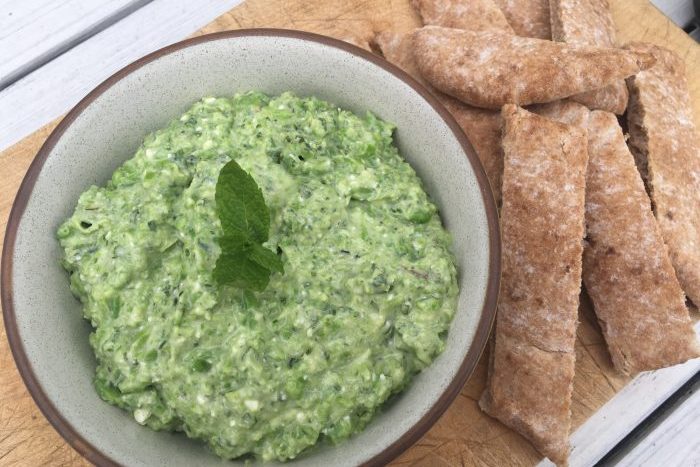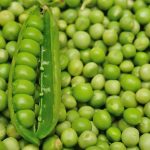This vibrant green dip went down a smash with our kids - hence the name! Quick, easy and tasty, no-cook with just basic equipment needed; what’s not to like?
A lovely lunchbox idea with the wholemeal pitta bread to dunk in - beats a boring sandwich any day!
Skills Check
Follow a recipe; follow food safety & hygiene rules; tidy away; use measuring jugs and spoons; crush garlic; use a citrus squeezer; use a colander/sieve; use a kettle/blender/toaster (with adult supervision); season to taste.
Equipment
Kettle, toaster, medium bowl, colander/sieve, blender, measuring spoons, weighing scales, citrus squeezer, garlic crusher.
Allergens (Please note the allergens listed are indicative only. Allergens vary depending on brand; check the labels on the products you use)
Gluten | Milk
Ingredients (serves 4):
- 200 g frozen peas
- 100 g feta cheese
- Juice of 1 lemon
- 2 handfuls of mint
- 1 clove garlic
- 1 tbsp olive oil
- Pepper, to taste
- 4 wholemeal pitta bread, toasted
Method
- Boil the kettle. Place the peas in a bowl and cover with boiling water. Leave them to stand for 3 minutes, then drain and rinse in cold water.
- Place the peas, feta, lemon juice, mint, garlic and olive oil into a blender.
- Blitz until you have a fairly chunky consistency.
- Taste and season if necessary.
- Scrape into a bowl and serve with wholemeal pitta bread.

 So thinking about Pea & Mint Smash Up with wholemeal pitta bread ...
So thinking about Pea & Mint Smash Up with wholemeal pitta bread ...
Pitta bread is a healthy source of complex carbohydrates. Choose wholemeal varieties to add extra fibre to your diet.
Peas are legumes and like other legumes (beans and lentils) they are packed with protein and fibre. They are also low in calories and fat, and are a good source of vitamins and minerals.
Feta cheese is a source of protein and calcium. Although lower in fat than some cheeses it should be used sparingly due to its very high salt content.
Nutritional Information
| Energy | 1343kJ / 320kcal | 16% | |
| Med | Fat | 9.4g | 13% |
| Med | Saturates | 4.2g | 21% |
| Low | Sugars | 4.9g | 5% |
| Med | Salt | 1.4g | 23% |
per 160g serving
% of an adult's reference intake
Typical values per 100g: Energy 839kJ / 200kcal
Notes
A traffic light system is used on nutrition labels to make it easier to see which foods and drinks are lower in calories, fat, sugar and salt. Try and choose more ‘greens’ and ‘ambers’ and fewer ‘reds’, and stick to smaller portions of ‘reds’.
Just because a recipe or a food has a red traffic light doesn’t mean you shouldn’t eat it. Understanding why a food or recipe might have a red light can be helpful. For example oily fish is high in total fat and so any recipe containing oily fish is likely to be ‘red’ for fat. But it is recommended that we eat oily fish at least once a week because the type of fat it contains is beneficial for our health.
% Reference Intakes are also shown. Reference Intakes are guidelines about the approximate amount of particular nutrients and energy required for a healthy diet (based on an average-sized woman doing an average amount of physical activity). Most children will require less than these Reference Intakes. The contribution of one serving of a food or drink to the Reference Intake for each nutrient is expressed as a percentage.



 So thinking about Pea & Mint Smash Up with wholemeal pitta bread ...
So thinking about Pea & Mint Smash Up with wholemeal pitta bread ...
